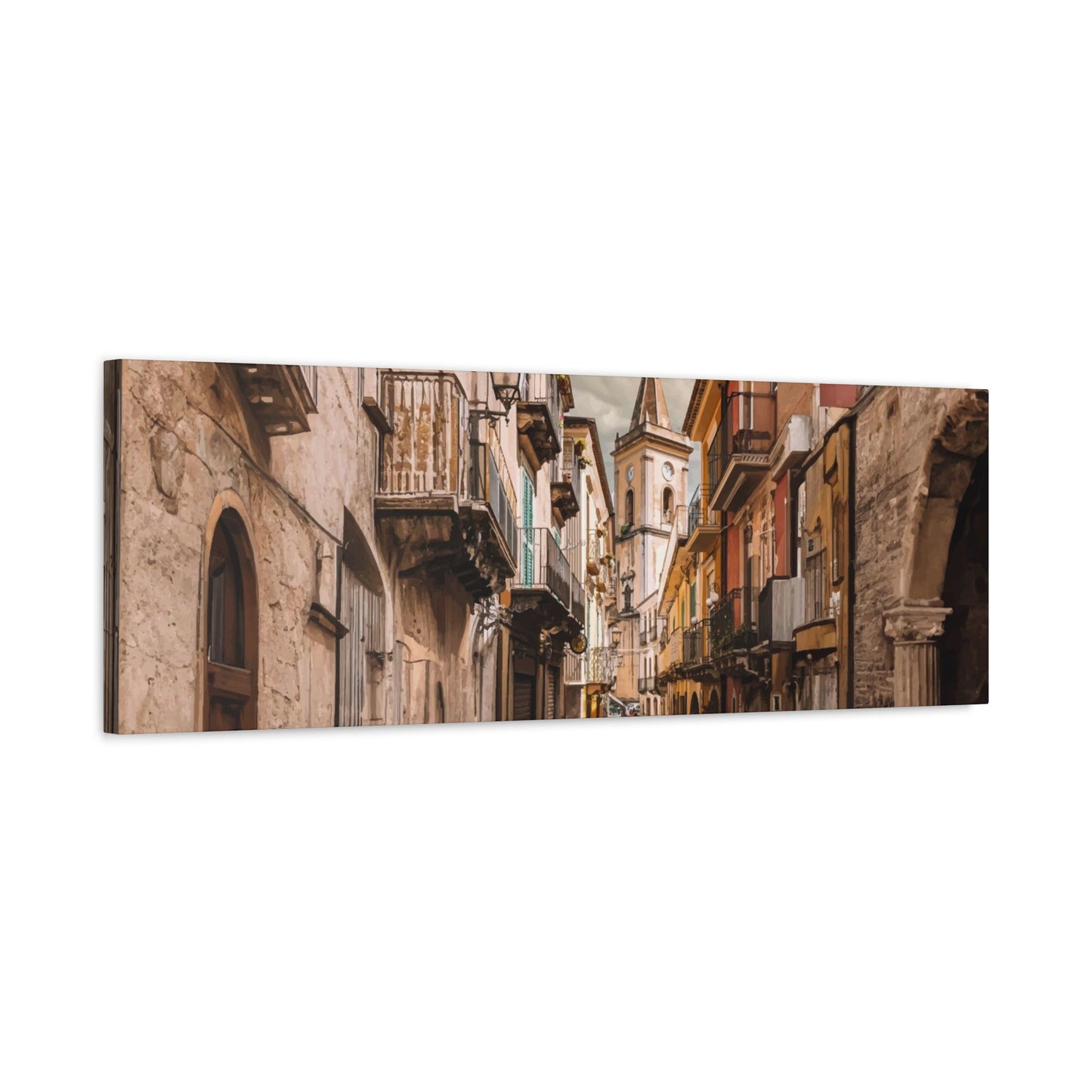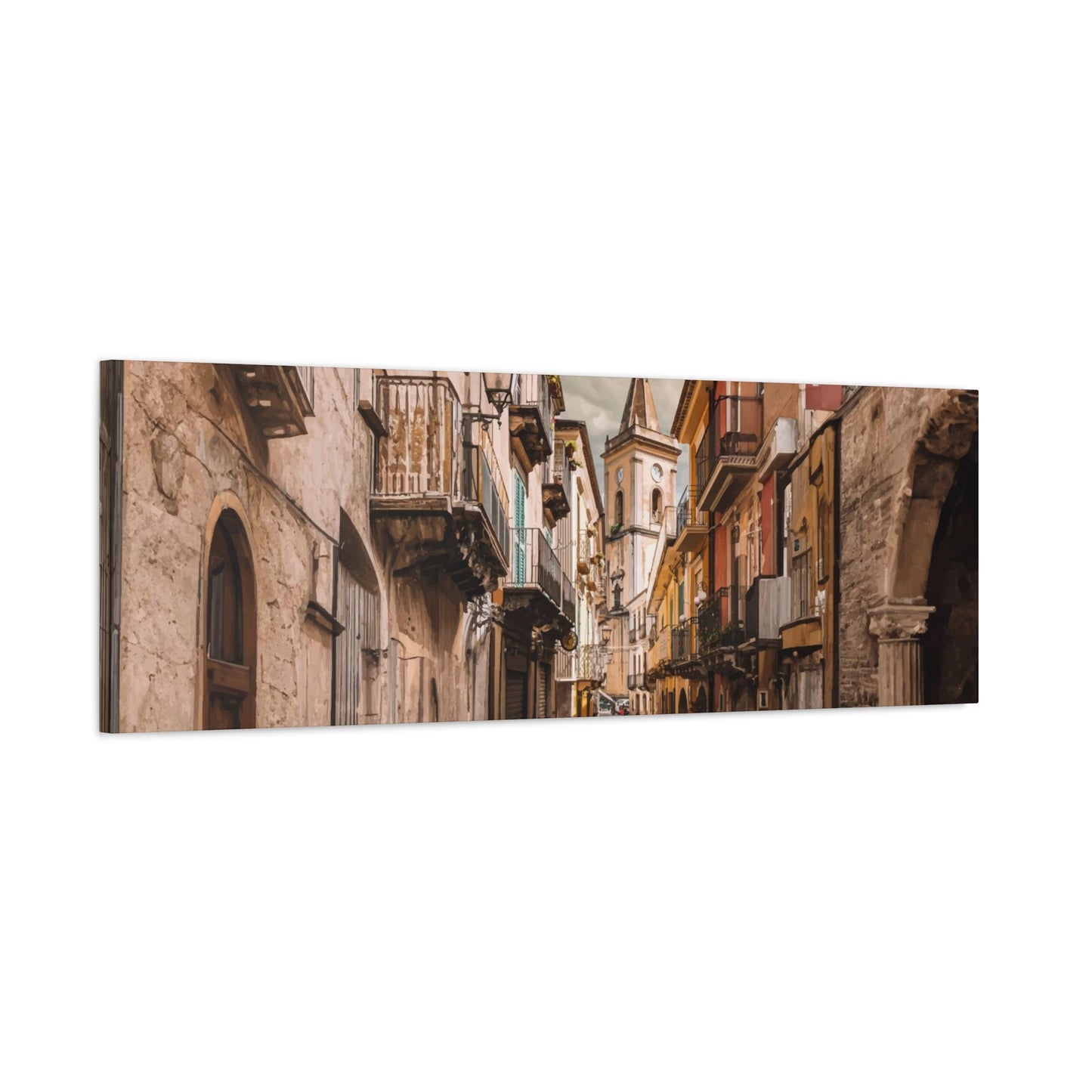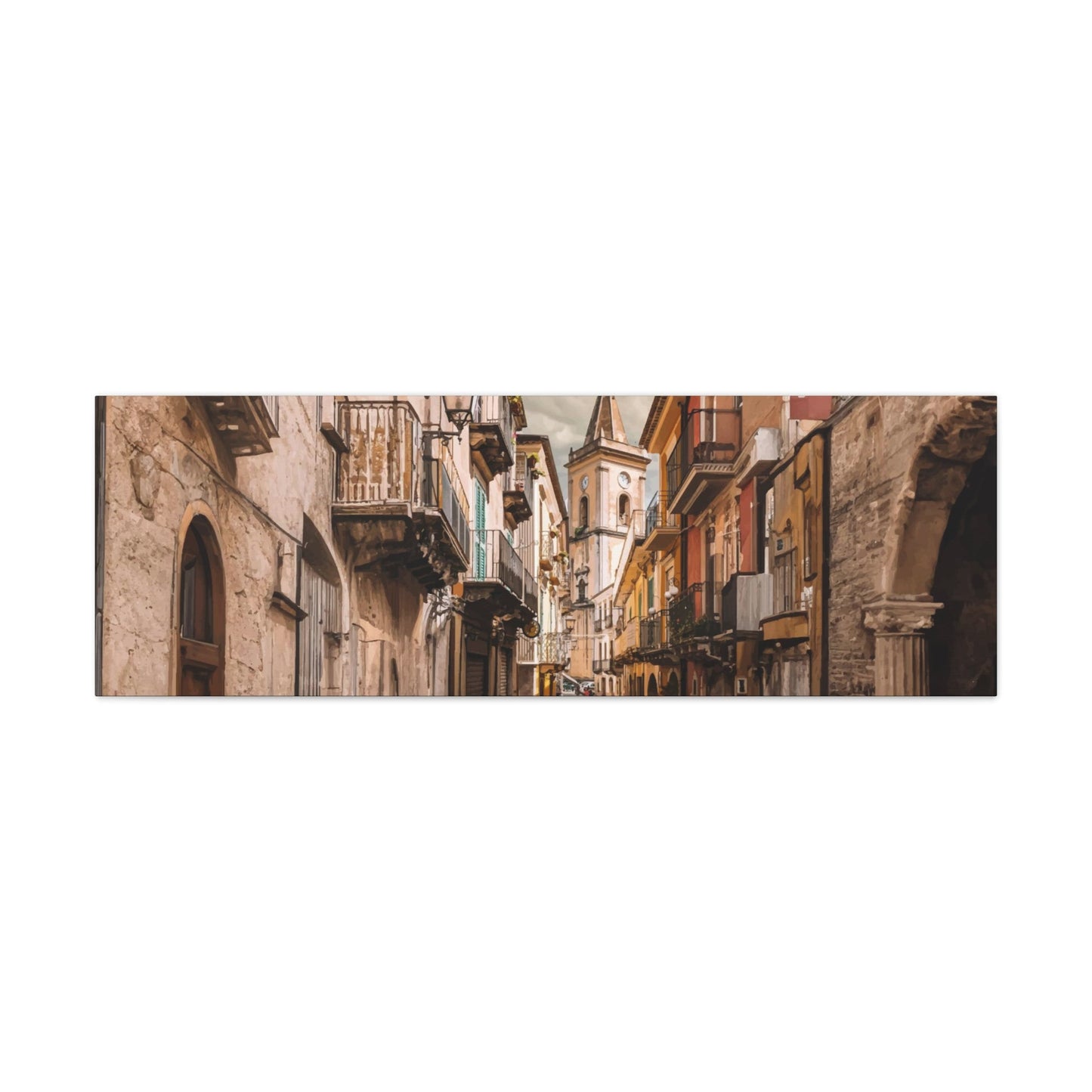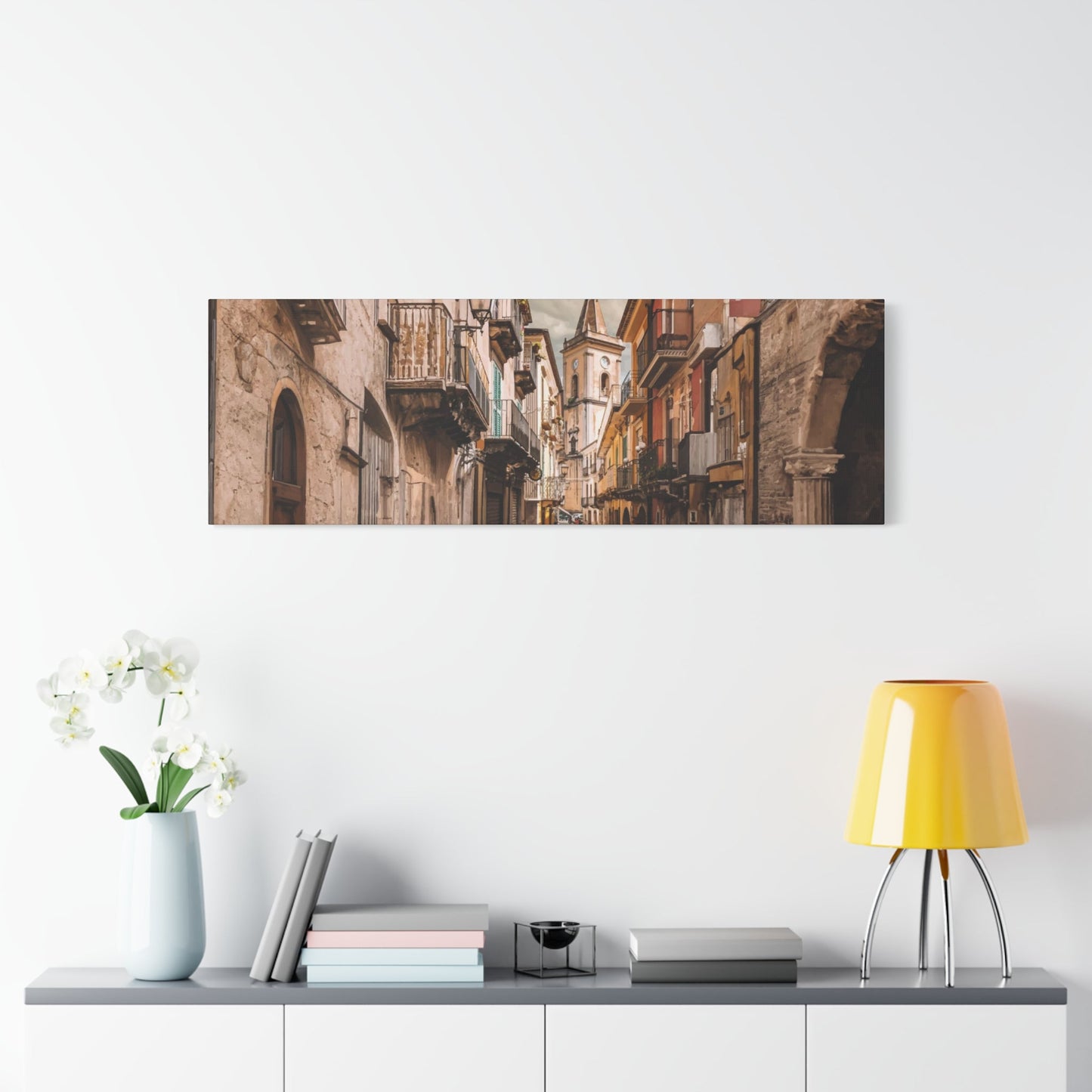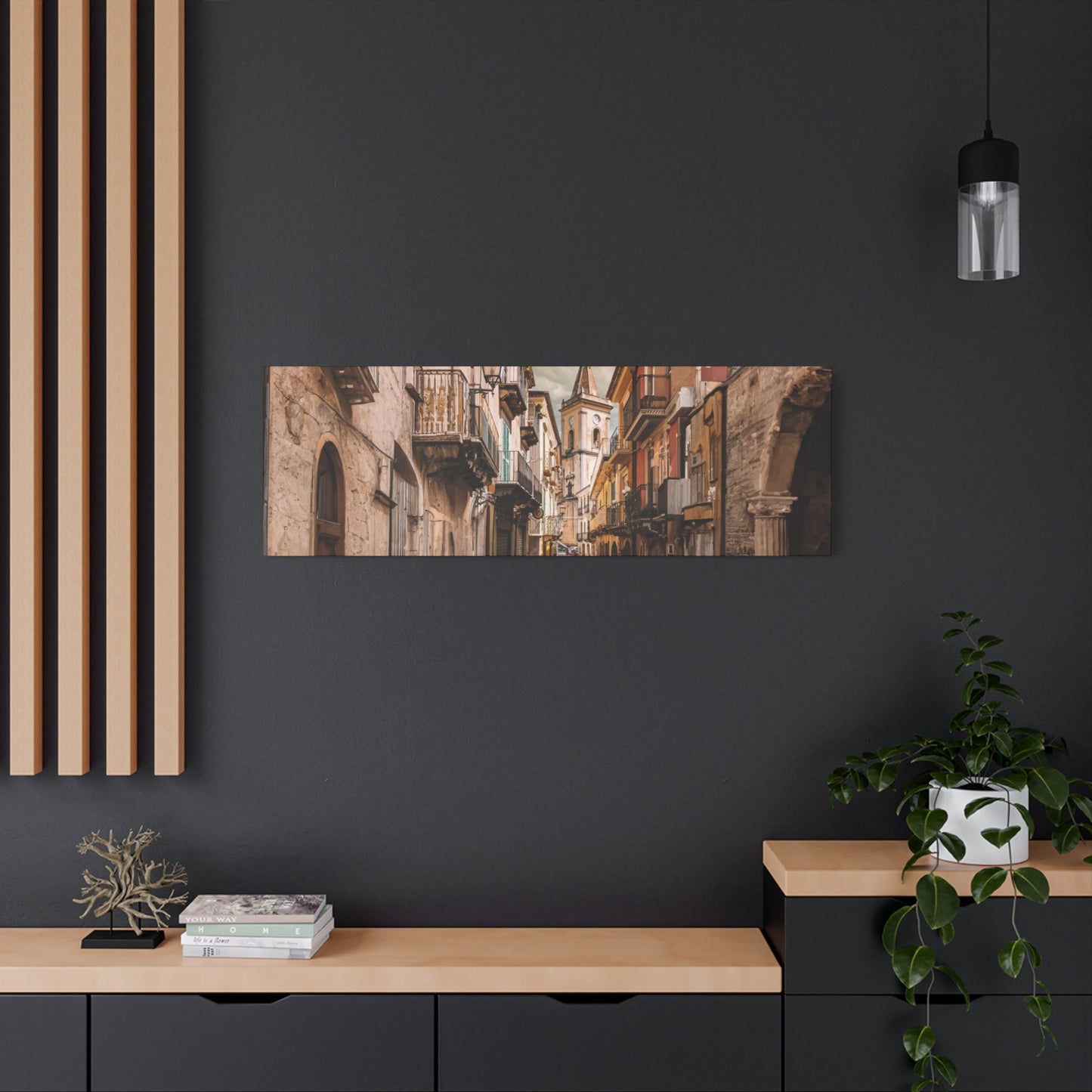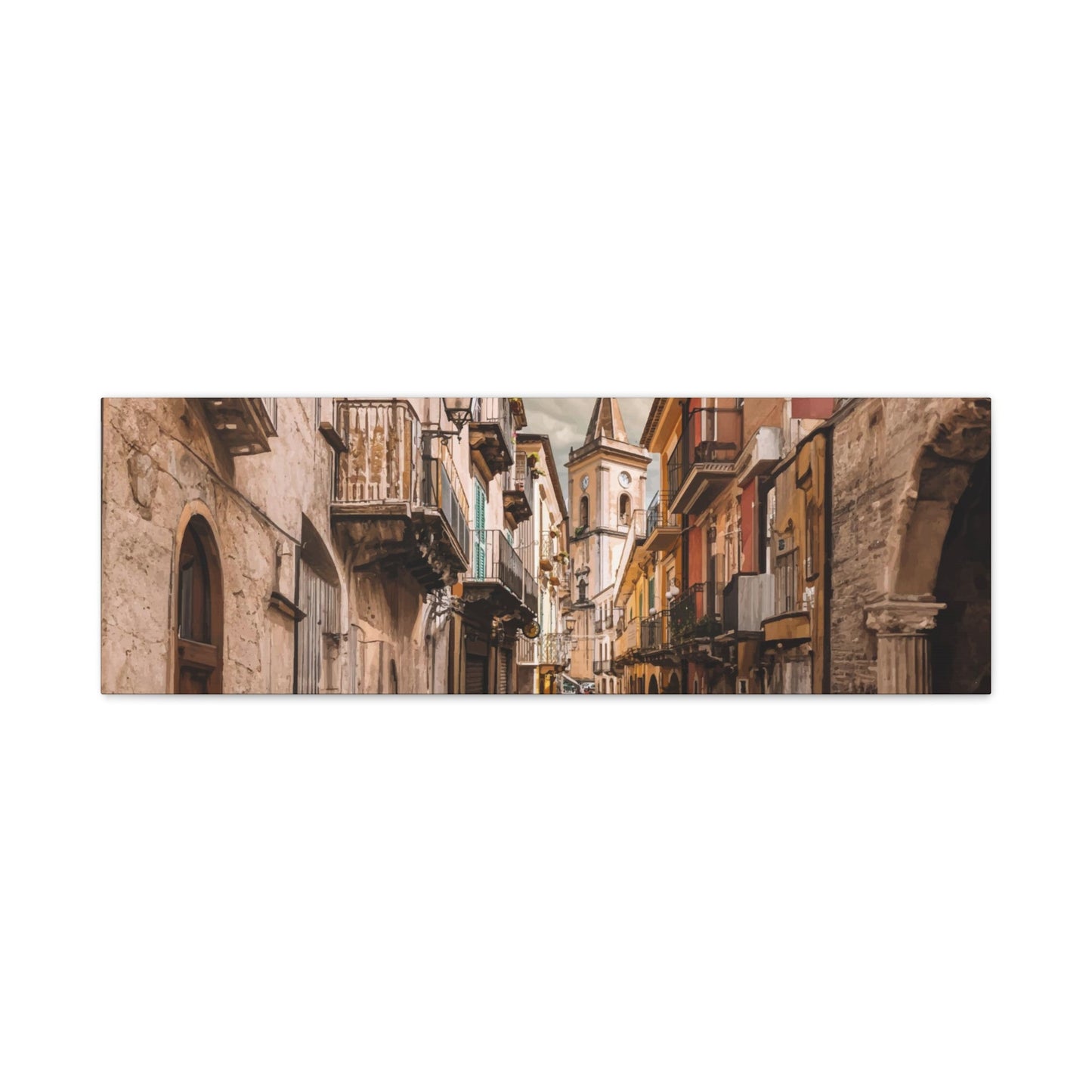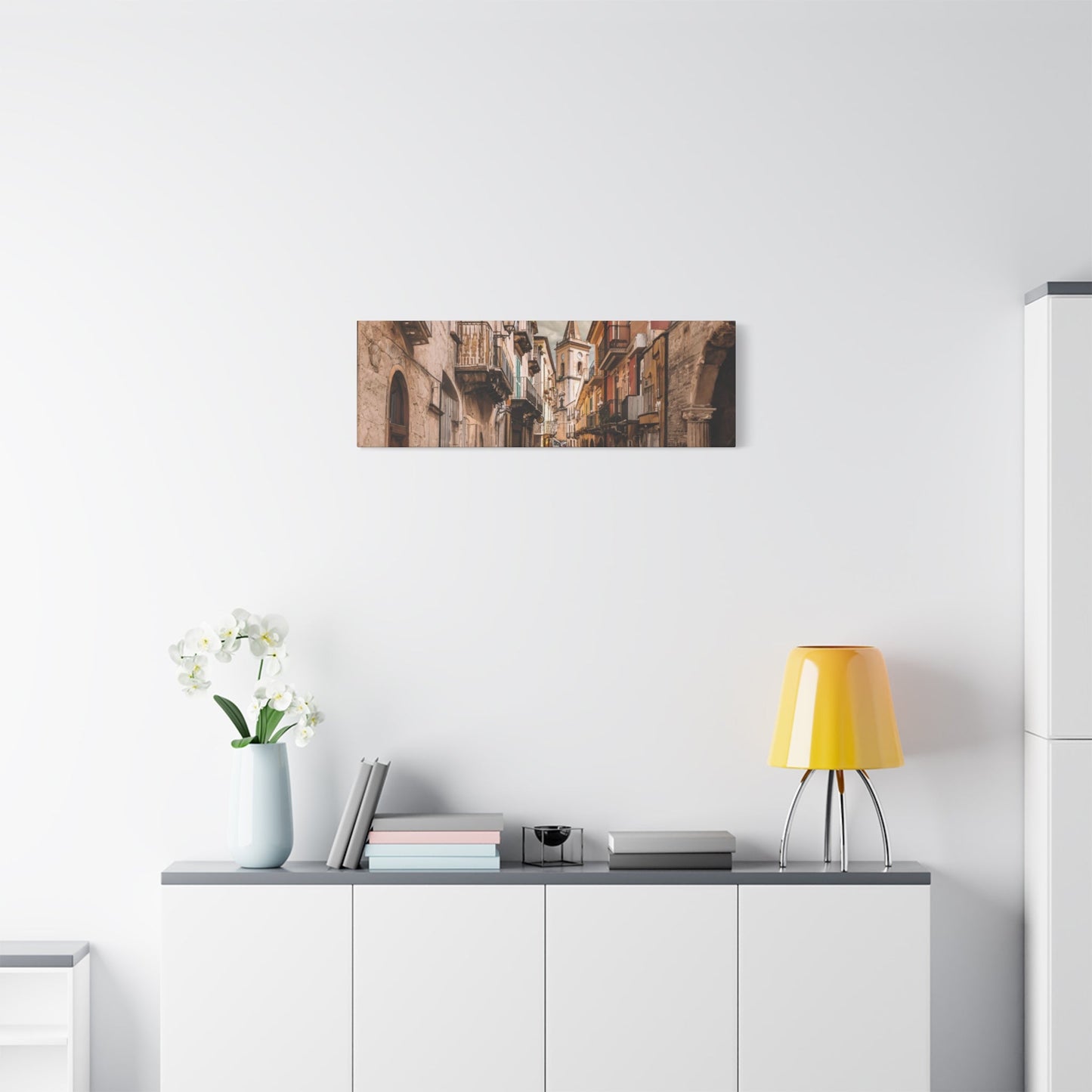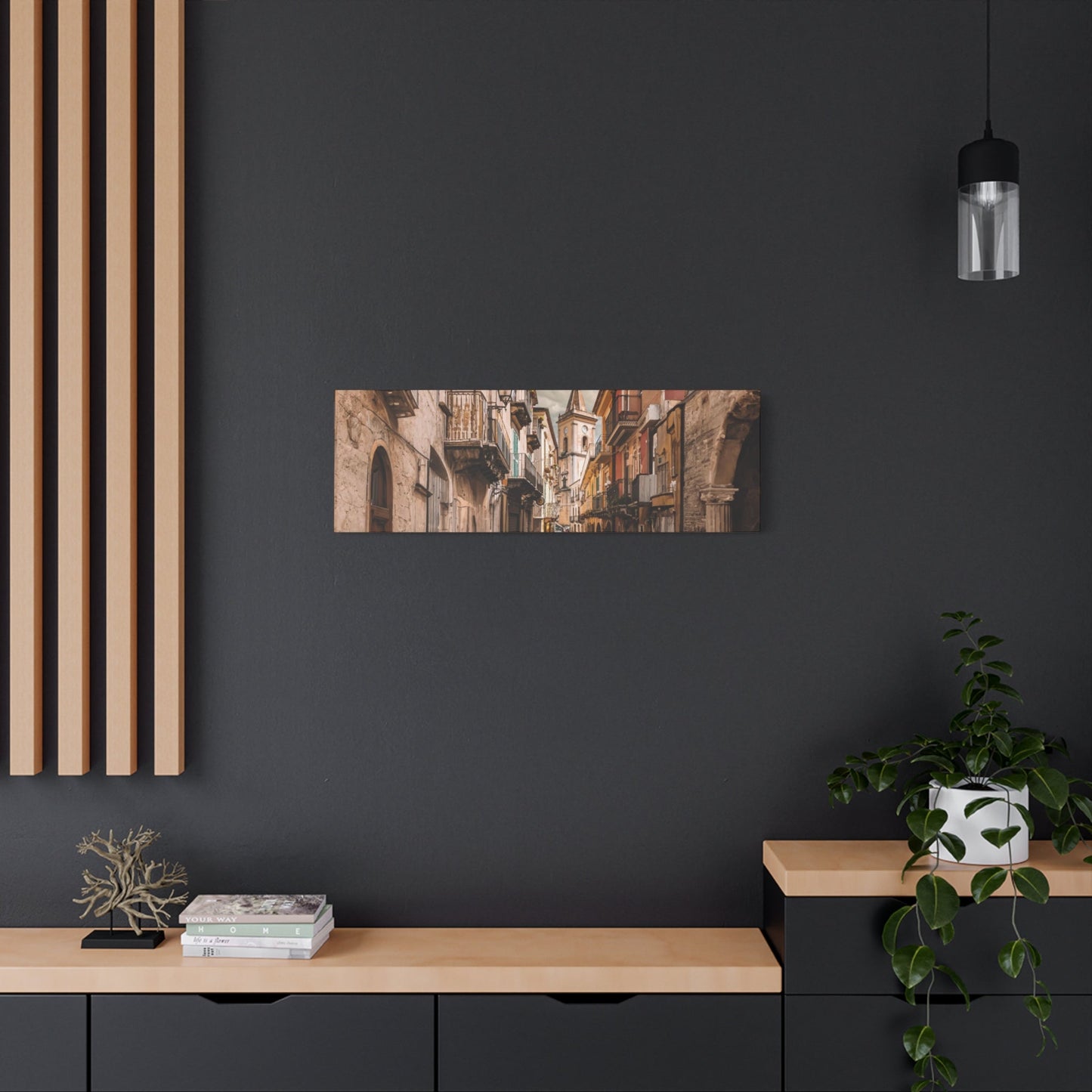European Buildings Wall Art: Magnificent Architectural Canvas Prints for Every Home
European architectural canvas prints represent an extraordinary fusion of historical grandeur and contemporary home decoration, offering homeowners an unparalleled opportunity to infuse their living environments with the timeless elegance of centuries-old structures. These remarkable artistic reproductions capture the essence of Europe's most celebrated buildings, transforming ordinary walls into captivating galleries that speak to the sophistication and cultural richness of the continent's architectural heritage.
The allure of European building canvas prints lies in their ability to transport viewers across time and continents, bringing the majestic presence of Gothic cathedrals, Renaissance palaces, and medieval fortresses directly into modern homes. Each carefully crafted print serves as a window into Europe's architectural soul, preserving the intricate details, dramatic lighting, and historical significance that make these structures legendary landmarks of human achievement.
Contemporary homeowners increasingly recognize the profound impact that well-chosen architectural artwork can have on their living environments. European building wall art transcends mere decoration, becoming a conversation starter, a source of daily inspiration, and a testament to one's appreciation for artistic excellence and historical preservation. These prints offer an accessible way to own a piece of European heritage, allowing individuals to surround themselves with the beauty and grandeur that has inspired countless generations of architects, artists, and cultural enthusiasts.
The versatility of European architectural canvas prints makes them suitable for virtually any residential setting, from minimalist modern apartments to traditionally decorated homes. Whether displaying a single statement piece or creating an elaborate gallery wall featuring multiple European landmarks, these prints possess the remarkable ability to enhance and elevate any decorative scheme while maintaining their distinctive character and visual appeal.
Exploring Classic European Architecture Through Canvas Art
Classic European architecture encompasses a vast array of architectural movements, each contributing unique elements to the continent's rich building traditions. From the soaring spires of Gothic cathedrals to the symmetrical perfection of neoclassical facades, European architectural canvas prints celebrate the diversity and evolution of construction techniques, artistic vision, and cultural expression that have shaped the continent's urban landscapes for millennia.
The Gothic architectural movement, characterized by its pointed arches, ribbed vaults, and flying buttresses, represents one of the most recognizable and beloved styles captured in European building canvas prints. These majestic structures, exemplified by Notre-Dame de Paris, Westminster Abbey, and the Cologne Cathedral, demonstrate the medieval period's ambitious architectural aspirations and spiritual devotion. Canvas prints featuring Gothic architecture often emphasize the dramatic vertical lines, intricate stone tracery, and ethereal quality of light filtering through stained glass windows that define this extraordinary architectural style.
Renaissance architecture, emerging in 15th-century Italy and spreading throughout Europe, brought renewed interest in classical proportions, symmetry, and mathematical precision to building design. European architectural canvas prints showcasing Renaissance masterpieces like St. Peter's Basilica, the Palace of Versailles, and the Louvre Palace capture the harmonious balance between artistic beauty and structural innovation that characterizes this influential period. These prints often highlight the elegant dome structures, classical columns, and ornate decorative elements that distinguish Renaissance architecture from its medieval predecessors.
Baroque architecture, with its dramatic curves, elaborate ornamentation, and theatrical grandeur, provides another rich source of inspiration for European building canvas prints. The movement's emphasis on emotional impact and visual spectacle translates beautifully to wall art, allowing homeowners to experience the awe-inspiring presence of structures like the Palace of Versailles, St. Paul's Cathedral, and the Winter Palace. These prints capture the dynamic interplay of light and shadow, the sweeping architectural gestures, and the opulent decorative programs that make Baroque buildings so visually compelling.
The neoclassical movement, inspired by ancient Greek and Roman architecture, contributed numerous iconic structures to Europe's architectural landscape. Canvas prints featuring neoclassical buildings like the Brandenburg Gate, the British Museum, and the Arc de Triomphe showcase the style's emphasis on geometric purity, monumental scale, and classical orders. These architectural reproductions appeal to those who appreciate the timeless elegance and mathematical precision that define neoclassical design principles.
Timeless European Building Posters for Modern Living
The enduring appeal of European architectural posters stems from their ability to bridge the gap between historical grandeur and contemporary aesthetic preferences. These carefully curated reproductions transform iconic European buildings into accessible art pieces that complement modern living environments while preserving the architectural integrity and cultural significance of their subjects. The timeless quality of European building posters ensures their continued relevance regardless of changing decorative trends or personal style evolution.
Modern reproduction techniques have revolutionized the quality and accessibility of European architectural posters, allowing for unprecedented detail reproduction and color accuracy that captures every nuance of the original structures. High-resolution digital printing processes preserve the subtle gradations of stone textures, the play of natural light across building facades, and the intricate architectural details that give European buildings their distinctive character and visual appeal.
The versatility of European building posters makes them suitable for various residential applications, from creating focal points in living rooms to adding sophistication to home offices or study areas. Their lightweight construction and flexible sizing options allow for easy installation and repositioning, making them an ideal choice for renters or homeowners who frequently update their decorative schemes. The affordability of poster formats also makes it possible to create impressive gallery walls featuring multiple European landmarks without significant financial investment.
Contemporary homeowners appreciate the cultural sophistication that European architectural posters bring to their living environments. These prints serve as subtle indicators of worldliness, educational background, and artistic appreciation, contributing to the overall ambiance and personality of residential settings. The presence of carefully selected European building posters can elevate the perceived value and sophistication of any home while providing daily visual inspiration and cultural enrichment.
The durability of modern printing materials ensures that European building posters maintain their visual impact over extended periods, resisting fading, moisture damage, and other environmental factors that might compromise their appearance. Advanced UV-resistant inks and high-quality paper stocks contribute to the longevity of these art pieces, making them worthwhile investments for long-term home decoration projects.
Incorporating European Wall Art into Contemporary Home Design
The integration of European architectural wall art into contemporary home design requires careful consideration of scale, color harmony, and stylistic compatibility to achieve optimal visual impact and aesthetic coherence. Successful incorporation of these powerful artistic elements depends on understanding how European building imagery interacts with existing decorative schemes while enhancing rather than overwhelming the overall design concept.
Scale considerations play a crucial role in the effective placement of European architectural wall art, as the monumental nature of these buildings requires careful proportional relationships with surrounding furniture and architectural elements. Large-format canvas prints work exceptionally well in rooms with high ceilings and generous wall areas, where they can achieve their full dramatic impact without appearing cramped or overwhelming. Conversely, smaller prints or poster formats may be more appropriate for intimate settings where subtle architectural references enhance rather than dominate the decorative scheme.
Color coordination between European building wall art and existing room palettes requires thoughtful analysis of the dominant tones present in architectural photography or artistic reproductions. Many European buildings feature neutral stone tones, warm earth colors, or sophisticated gray palettes that complement a wide range of contemporary color schemes. However, certain architectural subjects may include vibrant accent colors from decorative elements, stained glass, or surrounding landscapes that should be considered when selecting complementary furnishings and accessories.
The stylistic integration of European architectural wall art with contemporary furniture and accessories presents exciting opportunities for creating dynamic visual contrasts that enhance both traditional and modern elements. The juxtaposition of classical architectural imagery with sleek contemporary furniture can create sophisticated tension that adds depth and interest to residential settings. Alternatively, the combination of European building art with traditional or transitional furnishings can reinforce themes of historical continuity and cultural appreciation.
Lighting considerations significantly impact the effectiveness of European architectural wall art, as proper illumination can enhance the dramatic qualities inherent in these subjects while poor lighting may diminish their visual impact. Natural lighting from windows can beautifully illuminate architectural prints during daylight hours, while strategically placed artificial lighting can create dramatic effects during evening hours. Picture lighting, track lighting, or strategically positioned table lamps can highlight specific architectural details while creating appealing ambient lighting throughout the room.
Historic Buildings Wall Decoration Concepts and Applications
Historic European buildings offer an inexhaustible source of inspiration for wall decoration projects, providing homeowners with countless opportunities to celebrate architectural heritage while creating distinctive and meaningful residential environments. The rich variety of historical periods, architectural styles, and cultural contexts represented in European building art ensures that every homeowner can find pieces that resonate with their personal tastes and decorative objectives.
Medieval castle imagery provides particularly dramatic options for historic building wall decoration, capturing the romanticized appeal of fortress architecture while celebrating the engineering achievements of early European civilizations. Canvas prints featuring castles like Neuschwanstein, Edinburgh Castle, or Château de Chambord bring elements of fantasy and adventure to contemporary homes while showcasing the impressive defensive architecture that protected European communities for centuries. These prints often emphasize the imposing stone masonry, defensive towers, and picturesque settings that make castle architecture so visually compelling.
Renaissance palace imagery offers elegant alternatives for those seeking more refined historic building wall decoration options. Prints featuring palaces like the Doge's Palace in Venice, the Royal Palace of Madrid, or Hampton Court Palace showcase the sophisticated architectural achievements of Europe's most powerful ruling families. These reproductions capture the ornate facades, symmetrical garden layouts, and decorative programs that reflect the artistic patronage and cultural ambitions of Renaissance nobility.
Religious architectural subjects provide spiritually meaningful options for historic building wall decoration, celebrating the profound faith and artistic dedication that produced Europe's greatest sacred structures. Cathedral, church, and monastery imagery offers opportunities to incorporate themes of transcendence, artistic achievement, and cultural continuity into residential settings. Prints featuring structures like Chartres Cathedral, St. Mark's Basilica, or Mont-Saint-Michel capture the soaring aspirations and architectural innovations that distinguish European sacred architecture.
University and civic building imagery represents another compelling category for historic building wall decoration, celebrating the intellectual and democratic traditions that have shaped European civilization. Prints featuring famous universities like Oxford, the Sorbonne, or Bologna, along with civic structures like town halls and public libraries, acknowledge the importance of education and civic participation in European cultural development. These subjects often appeal to homeowners with academic backgrounds or those who value intellectual achievement and public service.
The seasonal and atmospheric variations present in historic building photography provide additional decorative possibilities, as the same architectural subject can convey dramatically different moods depending on lighting conditions, weather, and surrounding landscape elements. Winter scenes featuring snow-covered European buildings create cozy, contemplative atmospheres, while summer images emphasizing lush gardens and bright skies contribute energy and optimism to residential settings.
Elegant European Architecture Poster Collections
Curated collections of elegant European architecture posters offer homeowners sophisticated approaches to creating cohesive and visually impressive wall art displays that celebrate the diversity and beauty of continental building traditions. These thoughtfully assembled groupings eliminate the guesswork involved in selecting compatible architectural subjects while ensuring aesthetic harmony and cultural coherence throughout residential settings.
Thematic poster collections focusing on specific architectural periods provide educational and visually satisfying approaches to European building art display. Gothic architecture collections might include cathedrals, churches, and universities from across Europe, showcasing the international development and regional variations within this influential architectural movement. Renaissance collections could feature palaces, villas, and public buildings that demonstrate the period's emphasis on classical proportions and decorative sophistication.
Geographic poster collections celebrating specific European cities or regions offer opportunities to honor particular cultural traditions while creating focused and meaningful art displays. Paris collections might include the Notre-Dame Cathedral, the Louvre, the Arc de Triomphe, and other iconic Parisian landmarks, creating comprehensive tributes to one of Europe's most architecturally significant cities. Italian collections could showcase the diversity of Italian architectural achievement, from Roman ruins to Renaissance masterpieces to Baroque churches.
Architectural function collections group buildings according to their intended purposes, creating interesting comparisons and contrasts between different approaches to similar building challenges. Castle collections demonstrate the evolution of military architecture across different European regions and time periods, while palace collections showcase the various ways European nobility expressed power and cultural sophistication through residential architecture.
Color-coordinated poster collections ensure visual harmony while celebrating architectural diversity, grouping buildings that share similar tonal qualities or photographic treatments. Sepia-toned collections create vintage atmospheres that emphasize the historical character of European architecture, while full-color collections showcase the vibrant materials and natural settings that contribute to architectural beauty.
The presentation and framing of elegant European architecture poster collections significantly impact their overall effectiveness and visual appeal. Consistent framing materials and matting choices create unity among diverse architectural subjects while professional mounting and spacing ensure optimal visual impact. Gallery-style presentations with matching frames and coordinated matting elevate poster collections to museum-quality displays that command respect and admiration.
Large European Building Canvas Prints as Statement Pieces
Oversized European building canvas prints possess the dramatic presence and visual authority necessary to serve as commanding focal points in contemporary residential settings. These impressive art pieces capture the monumental scale and architectural grandeur of Europe's greatest buildings while providing homeowners with powerful decorative elements that transform ordinary rooms into sophisticated cultural environments.
The selection of appropriate subjects for large-format European building canvas prints requires careful consideration of architectural drama, visual complexity, and emotional impact. Subjects with strong vertical elements, such as Gothic cathedrals or clock towers, work exceptionally well in rooms with high ceilings, where their upward thrust can be fully appreciated. Horizontal subjects, such as palace facades or bridge structures, may be more suitable for rooms with standard ceiling heights, where their lateral emphasis complements the room's proportions.
The technical aspects of producing large European building canvas prints demand advanced printing equipment and premium materials to ensure optimal image quality and longevity. High-resolution source imagery becomes increasingly important as print sizes increase, requiring professional-grade photography or digital reproduction techniques that preserve architectural details at enlarged scales. Premium canvas materials and archival inks ensure that these substantial investments maintain their visual impact over extended periods while resisting environmental damage.
Installation considerations for large European building canvas prints include wall preparation, mounting hardware selection, and positioning strategies that maximize visual impact while ensuring structural safety. Heavy-duty hanging systems may be necessary to support the weight of large canvas prints, while wall anchoring systems must be appropriate for the wall construction and weight distribution requirements. Professional installation may be advisable for particularly large or valuable pieces.
The lighting requirements for large European building canvas prints differ significantly from those of smaller art pieces, as the increased surface area and varied tonal ranges present unique illumination challenges. Uniform lighting across the entire print surface requires careful planning and potentially multiple light sources to avoid shadows or uneven illumination. The interplay between natural and artificial lighting throughout the day can create changing moods and emphasize different architectural details as lighting conditions evolve.
Room design considerations must account for the powerful visual presence of large European building canvas prints, as these commanding pieces will inevitably become the dominant decorative elements in their environments. Furniture selection, color schemes, and accessory choices should complement rather than compete with the architectural imagery, creating harmonious environments that enhance rather than diminish the impact of these significant art investments.
Chic European Architecture Wall Art for Modern Aesthetics
The intersection of historic European architecture and contemporary aesthetic sensibilities creates exciting opportunities for developing chic wall art solutions that honor architectural heritage while satisfying modern decorative preferences. This sophisticated approach to European building art emphasizes clean presentation, thoughtful curation, and stylistic harmony that appeals to design-conscious homeowners seeking cultural sophistication without sacrificing contemporary elegance.
Modern presentation techniques transform traditional European architectural subjects into chic contemporary art pieces through innovative framing, mounting, and display strategies. Float mounting techniques create contemporary appearances that emphasize the graphic qualities of architectural photography while maintaining the cultural significance of the subject matter. Minimalist framing approaches using sleek metal or acrylic materials provide modern contexts for historic architectural imagery without overwhelming the visual impact of the buildings themselves.
Color treatment and photographic processing techniques can modernize European architectural imagery while preserving its essential character and cultural meaning. Black and white processing emphasizes architectural form, texture, and composition while creating timeless appearances that complement contemporary decorative schemes. Selective color treatments might highlight specific architectural elements while rendering others in monochrome, creating dramatic focal points that satisfy modern aesthetic preferences.
Scale manipulation and cropping strategies offer additional methods for creating chic European architectural wall art that emphasizes graphic impact over documentary completeness. Close-up views of architectural details, such as ornate stonework, decorative columns, or intricate window designs, create abstract compositions that celebrate craftsmanship while functioning as sophisticated decorative elements. These detail-focused approaches allow historic architecture to contribute to contemporary aesthetics without appearing dated or overly traditional.
The integration of European architectural wall art into modern gallery wall arrangements requires careful attention to proportional relationships, spacing, and visual flow that maintains contemporary sophistication while honoring architectural subjects. Mixed-media arrangements combining architectural prints with abstract art, photography, or contemporary graphics can create dynamic displays that satisfy modern aesthetic preferences while celebrating European cultural heritage.
Contemporary color palettes provide frameworks for selecting European architectural wall art that complements modern decorative schemes while maintaining cultural authenticity. Neutral color schemes emphasizing grays, whites, and natural tones create sophisticated backdrops for architectural imagery while modern accent colors can provide contemporary energy and personality. The key lies in balancing respect for architectural heritage with contemporary design principles that create living environments suited to modern lifestyles.
Decorative European Building Poster Ideas and Applications
The versatility of European building posters makes them ideal candidates for diverse decorative applications throughout residential environments, offering homeowners affordable and flexible options for incorporating architectural heritage into their daily living experiences. These adaptable art pieces can serve functional and aesthetic purposes simultaneously, contributing to both the visual appeal and cultural enrichment of contemporary homes.
Educational applications of European building posters provide families with opportunities to create learning environments that celebrate architectural achievement while encouraging cultural curiosity and historical awareness. Home offices, studies, and children's rooms can benefit from carefully selected architectural posters that spark conversations about history, engineering, and artistic achievement. Interactive approaches might include maps showing poster locations or supplementary materials explaining architectural features and historical contexts.
Seasonal decorating strategies incorporating European building posters allow homeowners to refresh their environments throughout the year while maintaining consistent architectural themes. Winter displays might emphasize cozy medieval villages or snow-covered castles, while summer arrangements could feature Mediterranean architecture or garden-focused palace imagery. This approach provides decorative variety while building comprehensive collections of European architectural art over time.
Room-specific applications maximize the decorative and functional benefits of European building posters by matching architectural subjects to room purposes and activities. Kitchen displays might feature market squares, town halls, or other civic buildings that celebrate community gathering traditions. Bedroom applications could emphasize romantic castle imagery or peaceful monastery subjects that contribute to restful atmospheres.
Budget-conscious decorating strategies make extensive use of European building posters to create impressive visual impact without significant financial investment. Rotating displays allow homeowners to enjoy larger collections while displaying only selected pieces at any given time. DIY framing and matting projects can customize poster presentations while controlling costs and ensuring perfect coordination with existing decorative schemes.
The temporary nature of poster applications makes them ideal for experimental decorating approaches that test color schemes, layout arrangements, or thematic concepts before committing to more permanent art investments. Renters particularly benefit from the flexibility of poster-based decorating, as these lightweight and easily removable art pieces allow for personal expression without property modifications or security deposit risks.
Minimalist European Wall Art Design Principles
The marriage of minimalist design principles with European architectural imagery creates sophisticated wall art solutions that honor both contemporary aesthetic preferences and historical architectural achievement. This refined approach emphasizes essential elements while eliminating unnecessary visual clutter, resulting in powerful artistic statements that complement modern living environments without overwhelming their clean, unadorned aesthetics.
Compositional simplicity forms the foundation of successful minimalist European wall art, focusing attention on fundamental architectural elements such as form, line, and proportion rather than decorative details or historical context. This approach might emphasize the geometric purity of classical columns, the sweeping curves of baroque domes, or the angular precision of modernist structures. By isolating these essential elements, minimalist presentations allow viewers to appreciate architectural beauty in its most concentrated form.
Color reduction strategies transform complex European architectural subjects into streamlined visual experiences that satisfy minimalist sensibilities while preserving cultural significance. Monochromatic treatments, limited color palettes, or selective color applications can simplify busy architectural scenes while maintaining their essential character and emotional impact. These techniques create cohesive visual experiences that integrate seamlessly with contemporary decorative schemes.
Scale and negative usage considerations play crucial roles in minimalist European wall art design, as generous white or neutral areas around architectural subjects create breathing room that enhances visual impact while satisfying minimalist preferences for uncluttered presentations. This approach requires careful attention to proportional relationships and spatial balance to ensure that architectural subjects maintain their presence without appearing lost or diminished.
Framing and presentation strategies for minimalist European wall art emphasize clean lines, premium materials, and invisible mounting techniques that allow architectural subjects to command attention without distracting frame elements. Float mounting, edge-to-edge printing, or frameless presentations can create contemporary appearances that satisfy minimalist requirements while maintaining the dignity and cultural significance of European architectural subjects.
The strategic placement of minimalist European wall art within contemporary interiors requires understanding how architectural imagery interacts with modern furniture, lighting, and spatial organization. Single statement pieces often prove more effective than multiple smaller works, as they provide focal points that enhance rather than complicate minimalist room designs. Careful consideration of sight lines, natural lighting, and relationship to key furniture pieces ensures optimal visual impact within minimalist design frameworks.
Iconic Buildings of Europe Featured on Canvas
Europe's most iconic buildings represent architectural achievements that have inspired generations of designers, artists, and cultural enthusiasts, making them ideal subjects for canvas art that celebrates both artistic excellence and historical significance. These legendary structures embody the cultural aspirations, technical innovations, and aesthetic visions that have shaped European civilization, offering homeowners opportunities to connect with this rich heritage through carefully crafted artistic reproductions.
The Eiffel Tower stands as perhaps the most recognizable European architectural icon, symbolizing not only Parisian elegance but also the industrial age's engineering ambitions and aesthetic possibilities. Canvas prints featuring this iron lattice masterpiece capture its graceful proportions, intricate structural details, and dramatic relationship with the surrounding cityscape. Different photographic perspectives and lighting conditions can emphasize various aspects of the tower's character, from its monumental presence to its delicate filigree-like details.
Big Ben and the Houses of Parliament represent quintessential examples of Gothic Revival architecture, showcasing Victorian England's romantic interpretation of medieval building traditions. Canvas reproductions of these iconic London landmarks capture the intricate stonework, soaring tower proportions, and picturesque Thames riverfront setting that make them beloved symbols of British architectural achievement. The interplay between historical architectural forms and functional governmental purposes adds layers of cultural meaning to these compelling subjects.
The Colosseum in Rome embodies the engineering prowess and cultural ambitions of ancient European civilization, providing canvas art subjects that connect contemporary homes with the foundational traditions of Western architecture. Reproductions of this ancient amphitheater emphasize its massive scale, innovative construction techniques, and enduring presence within the modern Roman cityscape. The weathered stone surfaces and partially ruined condition add romantic character that appeals to contemporary aesthetic sensibilities.
Notre-Dame de Paris, despite recent challenges, remains one of Europe's most beloved architectural icons, representing the highest achievements of Gothic cathedral design. Canvas prints featuring this masterpiece capture the harmony between structural innovation and spiritual aspiration that defines Gothic architecture. The interplay of stone tracery, stained glass, and soaring vertical elements creates compositions that satisfy both aesthetic and emotional requirements for meaningful home decoration.
Neuschwanstein Castle exemplifies the romantic fairy-tale castle imagery that captures popular imagination while showcasing Bavaria's distinctive architectural traditions. Canvas reproductions of this 19th-century fantasy emphasize its dramatic alpine setting, elaborate decorative programs, and storybook proportions that make it one of Europe's most photographed and beloved architectural subjects. The combination of medieval revival architecture and spectacular natural scenery creates particularly appealing wall art subjects.
Framed European Architecture Prints for Sophisticated Presentation
The presentation quality of European architectural prints significantly impacts their effectiveness as decorative elements and cultural statements within residential environments. Professional framing transforms architectural imagery into sophisticated art pieces that command respect while protecting valuable prints from environmental damage and ensuring their longevity as decorative investments.
Frame selection for European architectural prints requires careful consideration of both the architectural subject matter and the intended decorative context to achieve optimal visual harmony and cultural appropriateness. Traditional wooden frames in warm tones complement classical and romantic architectural subjects, while sleek metal frames provide contemporary presentations that satisfy modern aesthetic preferences. The proportional relationship between frame width and print dimensions affects visual impact, with wider frames providing more formal presentations and narrower frames emphasizing contemporary sensibilities.
Matting strategies create visual breathing room around architectural subjects while providing opportunities for color coordination and proportional adjustment that enhance overall presentation quality. Double matting techniques add depth and sophistication to framed prints, while colored mats can complement specific architectural elements or coordinate with room color schemes. Conservation-quality matting materials ensure long-term protection against acid damage and environmental degradation.
Glass selection for framed European architectural prints involves balancing protection requirements with optical clarity and glare considerations that affect viewing quality. Standard picture glass provides basic protection at economical prices, while museum-quality glass offers superior clarity and UV protection that preserves print quality over extended periods. Anti-reflective glass treatments reduce glare problems in brightly lit environments, ensuring optimal viewing under various lighting conditions.
Mounting techniques for framed European architectural prints must balance presentation quality with conservation requirements that protect valuable prints from adhesive damage or dimensional changes. Archival mounting methods ensure that prints remain in pristine condition while allowing for future remounting if necessary. Proper mounting also prevents cockling, bubbling, or other dimensional problems that can compromise print appearance and longevity.
The strategic arrangement of framed European architectural prints within gallery wall configurations requires attention to visual balance, thematic coherence, and proportional relationships that create satisfying ensemble presentations. Consistent frame styles and matting approaches unite diverse architectural subjects while varied print sizes and orientations add visual interest and dynamic energy to wall arrangements.
Bold European Building Wall Poster Collections
Bold European building wall posters celebrate architectural drama and visual impact through dynamic compositions, striking color treatments, and powerful subject matter that commands attention while showcasing the most impressive aspects of European architectural achievement. These confident artistic presentations appeal to homeowners seeking statement pieces that reflect personality and cultural sophistication without subtlety or compromise.
High-contrast photographic treatments transform European architectural subjects into bold graphic statements that emphasize form, texture, and compositional drama over documentary accuracy or historical context. These approaches might utilize dramatic lighting, unusual viewing angles, or selective focus techniques that create powerful visual impact while maintaining architectural authenticity. The resulting prints function as contemporary art pieces that happen to feature historic architecture rather than traditional architectural documentation.
Dramatic scale relationships between architectural subjects and their natural or urban contexts create bold poster compositions that emphasize the monumental character of European buildings while showcasing their environmental relationships. Close-up views that fill entire poster formats with architectural details create abstract compositions that celebrate craftsmanship and design sophistication. Conversely, distant views that show buildings within their broader contexts emphasize their cultural and environmental significance.
Color saturation and enhancement techniques can transform traditional European architectural photography into bold contemporary art pieces that satisfy modern aesthetic preferences while preserving cultural authenticity. Vibrant sunset lighting, enhanced sky colors, or selective color treatments create eye-catching presentations that function effectively as decorative elements while maintaining respect for architectural subjects. These treatments work particularly well with Mediterranean, Eastern European, or Scandinavian architectural subjects that feature colorful materials or settings.
The grouping and arrangement of bold European building wall posters requires careful attention to visual balance and thematic coherence that prevents individual pieces from overwhelming each other while maintaining overall impact and cultural meaning. Large-scale arrangements might feature a single dominant piece supported by smaller complementary subjects, while grid arrangements can create comprehensive surveys of European architectural achievement that function as unified artistic statements.
Typography and graphic elements can enhance bold European building wall posters by providing historical context, location identification, or artistic commentary that adds educational and cultural value to purely visual presentations. However, these additions must be carefully designed to complement rather than compete with architectural imagery, using fonts and layouts that enhance rather than distract from the primary architectural subjects.
Stylish Canvas Prints of European Landmarks
Stylish presentations of European landmark canvas prints combine cultural sophistication with contemporary aesthetic sensibilities to create art pieces that satisfy both decorative and educational objectives. These carefully curated reproductions honor architectural heritage while meeting modern style requirements through innovative presentation techniques, thoughtful subject selection, and contemporary production methods that ensure optimal quality and visual impact.
Landmark selection for stylish canvas print collections emphasizes architectural subjects with strong visual appeal, cultural significance, and broad recognition that ensures their effectiveness as conversation pieces and cultural statements. The most successful selections balance familiarity with uniqueness, featuring well-known structures presented from unusual perspectives or in exceptional lighting conditions that create fresh impressions of familiar subjects.
Contemporary color treatments and photographic processing techniques transform traditional landmark imagery into stylish art pieces that complement modern decorative schemes while preserving cultural authenticity. These might include selective color applications that highlight specific architectural elements, HDR processing that enhances detail and tonal range, or artistic filters that create painterly effects while maintaining architectural clarity.
Print surface textures and canvas treatments add tactile interest and visual depth to European landmark canvas prints while creating more sophisticated presentations than standard smooth prints. Textured canvas surfaces that mimic traditional painting supports create artistic appearances that enhance the cultural value of architectural subjects. Specialty treatments such as gel mediums or varnish applications can add depth and richness that elevates canvas prints to fine art status.
Mounting and presentation strategies for stylish European landmark canvas prints emphasize contemporary approaches that highlight the artistic qualities of architectural imagery while maintaining professional presentation standards. Gallery wrap techniques that extend imagery around canvas edges create modern appearances that eliminate the need for traditional framing while maintaining sophisticated presentations. Alternative mounting methods such as float mounting or standoff hardware create contemporary displays that emphasize the graphic qualities of landmark imagery.
The coordination of stylish European landmark canvas prints with contemporary furniture and accessories requires understanding how architectural imagery interacts with modern materials, colors, and forms to create harmonious decorative schemes. Successful integration often involves echoing architectural colors in fabric choices, repeating geometric patterns in furniture selection, or complementing stone textures with natural material accessories.
Unique European Architecture Wall Decoration Approaches
Innovative approaches to European architecture wall decoration transcend traditional framing and hanging methods to create distinctive presentations that celebrate architectural heritage while satisfying contemporary design preferences and personal expression requirements. These creative strategies transform ordinary wall areas into engaging cultural environments that reflect individual taste while honoring European architectural traditions.
Mixed media presentations combine European architectural prints with complementary decorative elements such as maps, historical documents, architectural drawings, or related cultural artifacts to create comprehensive cultural displays that provide educational context while enhancing visual interest. These arrangements might feature building prints alongside city maps showing their locations, historical timeline graphics explaining their construction periods, or architectural detail drawings that illuminate construction techniques and design principles.
Three-dimensional display strategies incorporate architectural models, relief sculptures, or dimensional graphic elements that add depth and tactile interest to European building wall decoration. These approaches might combine flat prints with architectural fragment reproductions, building models, or dimensional letters spelling out city names or architectural terms. The resulting displays create engaging visual experiences that invite closer examination and interaction.
Lighting integration transforms European architecture wall decoration into dynamic presentations that change throughout the day and evening hours. LED strip lighting behind canvas prints creates dramatic backlighting effects, while picture lights or track lighting can emphasize specific architectural details or create mood lighting that enhances the cultural atmosphere. Color-changing LED systems can create seasonal variations or special occasion presentations.
Interactive technology integration allows European architecture wall decoration to incorporate digital elements such as QR codes linking to additional information, augmented reality features that provide virtual tours, or digital displays showing current weather or time in featured locations. These high-tech approaches appeal to younger family members while adding educational and entertainment value to traditional architectural art displays.
Seasonal rotation strategies maintain fresh visual interest in European architecture wall decoration by regularly changing displayed prints, rearranging compositions, or adding seasonal decorative elements that complement architectural subjects. This approach allows homeowners to enjoy larger art collections while maintaining dynamic and evolving decorative environments that never become stale or overly familiar.
Architectural theme rooms create comprehensive European building environments that extend wall decoration concepts throughout entire residential areas. These might include office areas dedicated to specific cities or architectural periods, reading nooks featuring university or library imagery, or dining areas showcasing European market squares and civic buildings. Such comprehensive approaches create immersive cultural experiences that transport occupants to European architectural environments.
Rustic European Building Wall Art for Traditional Aesthetics
Rustic presentations of European building wall art celebrate the timeless appeal of traditional architectural subjects while emphasizing natural materials, weathered textures, and aged appearances that create warm, welcoming environments suited to traditional decorative schemes. This approach honors the historical authenticity of European architecture while satisfying contemporary preferences for authentic, handcrafted aesthetics.
Distressed framing techniques create aged appearances that complement rustic European building subjects while adding textural interest and historical character to wall art presentations. These might include weathered wood frames with visible grain patterns, metal frames with oxidized or patinated finishes, or composite materials designed to mimic aged natural surfaces. The key lies in selecting treatments that enhance rather than overpower architectural subjects while contributing to overall rustic aesthetic goals.
Sepia and antique color treatments transform contemporary European building photography into rustic art pieces that appear to have aged naturally over time. These processing techniques emphasize the historical character of architectural subjects while creating cohesive visual experiences that integrate seamlessly with traditional decorative schemes. Selective aging effects might highlight specific architectural elements while allowing others to fade into atmospheric backgrounds.
Canvas texturing and surface treatments add tactile appeal and visual depth to rustic European building wall art while creating more authentic artistic presentations that complement traditional aesthetic preferences. Heavy canvas weaves, gel medium applications, or specialty printing surfaces can create paintings-like appearances that enhance the cultural value and artistic credibility of architectural reproductions.
The incorporation of complementary rustic elements such as vintage maps, antique postcards, historical documents, or period architectural drawings creates comprehensive cultural displays that provide historical context while maintaining rustic aesthetic coherence. These elements might be incorporated directly into frame presentations or arranged as supporting displays that enhance the primary architectural subjects.
Natural material coordination ensures that rustic European building wall art harmonizes with traditional furniture, accessories, and architectural elements commonly found in country, farmhouse, or traditional decorative schemes. Wood tones, natural fibers, aged metals, and stone textures can be echoed in art presentations to create unified environments that celebrate both architectural heritage and traditional craft traditions.
Contemporary European Architecture Canvas Collections
Contemporary presentations of European architecture on canvas bridge the gap between historical architectural achievement and modern aesthetic preferences through innovative printing techniques, contemporary framing approaches, and thoughtful curation that appeals to design-conscious homeowners seeking cultural sophistication without sacrificing contemporary style requirements.
Modern printing technologies enable unprecedented reproduction quality and creative possibilities for European architectural canvas collections, allowing for oversized formats, enhanced color accuracy, and specialty surface treatments that rival traditional fine art presentations. High-resolution digital printing preserves architectural details while offering creative processing options that can transform traditional architectural photography into contemporary art pieces.
Curated collection concepts organize European architectural canvas prints according to contemporary themes that resonate with modern homeowners while maintaining cultural authenticity and educational value. These might include sustainable architecture collections featuring European green building examples, urban renewal collections showcasing successful historic preservation projects, or design evolution collections demonstrating architectural development over time.
Contemporary color palettes provide frameworks for selecting European architectural canvas prints that complement modern decorative schemes while honoring architectural heritage. Neutral color schemes emphasizing whites, grays, and natural tones create sophisticated backdrops for architectural imagery, while carefully chosen accent colors can provide contemporary energy without overwhelming historical subjects.
Innovative display strategies for contemporary European architecture canvas collections emphasize flexible presentation options that accommodate changing decorative preferences and evolving art collections. Track mounting systems, interchangeable frame designs, or modular display configurations allow homeowners to refresh their wall art arrangements without major renovation or redecoration projects.
The integration of contemporary European architecture canvas collections with modern smart home technology creates dynamic presentation possibilities that enhance both aesthetic and functional aspects of residential environments. Digital integration might include climate-controlled display areas, programmable lighting systems, or connectivity features that provide additional information about architectural subjects through mobile applications or voice assistants.
Conclusion
European buildings wall art offers a stunning way to celebrate the rich architectural heritage and timeless beauty of Europe’s iconic cities. From the intricate details of Gothic cathedrals to the elegant facades of Renaissance palaces, these magnificent canvas prints bring history, culture, and artistry directly into your home. They transform ordinary walls into windows that showcase the grandeur and charm of European architecture, adding depth and character to any space.
Incorporating European buildings wall art into your décor allows you to infuse your living environment with sophistication and a sense of wanderlust. Whether displayed as bold statement pieces or part of a curated gallery wall, these prints complement a variety of interior styles—from classic and traditional to modern and minimalist. Their detailed craftsmanship and architectural beauty serve as a daily inspiration, reminding us of the creativity and vision that have shaped Europe’s urban landscapes over centuries.
Moreover, this style of wall art creates an inviting atmosphere that sparks conversation and curiosity. It connects viewers to the stories and cultural significance behind each building, fostering appreciation for architectural innovation and heritage. Whether you have traveled to these places or dream of visiting, European buildings art invites you to bring a piece of that experience into your home.
Ultimately, European buildings wall art is more than decoration—it’s a tribute to the artistry and history embedded in Europe’s cities. It enriches your living space with elegance, cultural depth, and timeless appeal, making it an excellent choice for anyone looking to elevate their home décor with meaningful and beautiful art.









